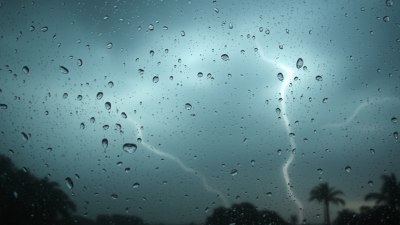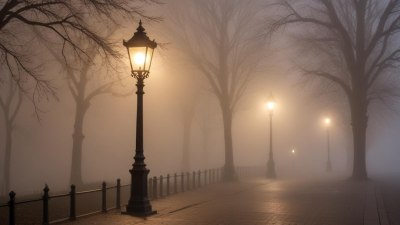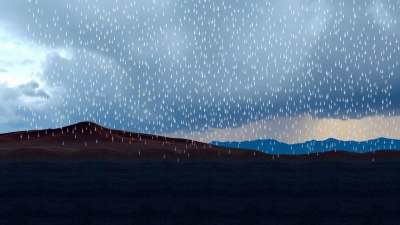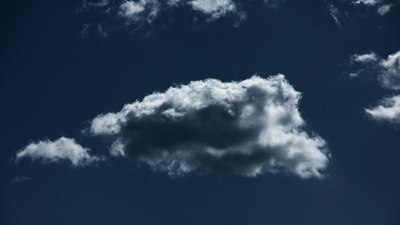What Is a Derecho
Learn about derechos, their formation, impacts, and how they differ from other storms.
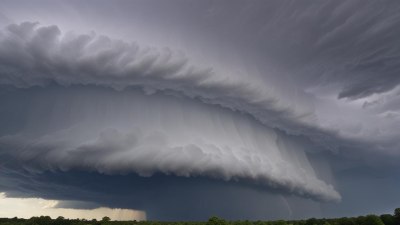
This image was created with the assistance of Freepik
A derecho is a widespread and long-lived windstorm that is associated with a band of rapidly moving showers or thunderstorms. This meteorological phenomenon typically travels from northwest to southeast and can produce damaging winds over a large area. Derechos are particularly notable because their winds can reach speeds similar to that of tornadoes, yet they occur in a different manner and typically cover a much broader area.
Formation of Derechos
Derechos form in a specific set of atmospheric conditions. Typically, they require a very unstable atmosphere, where warm, moist air lies underneath a layer of cooler air. This instability often leads to the development of severe thunderstorms. As these storms grow in strength, they can create a bow-shaped structure that is characteristic of a derecho. The wind speeds associated with a derecho are often accelerated due to a phenomenon known as downbursts, which occurs when cool air rapidly descends from a thunderstorm and spreads out when it hits the ground.
Characteristics of Derechos
One of the defining characteristics of a derecho is its straight-line winds, which can exceed speeds of 100 miles per hour in the most severe cases. These winds are associated with the mature stage of a thunderstorm, where downdrafts—the downward flow of air—intensify as they interact with the warm and moist surface air. Such conditions are conducive to the rapid forward progression of a squall line, which is a line of thunderstorms that can produce severe weather. Derechos are also distinguished from other wind events by their large spatial impact, often affecting areas up to 240 miles wide.
Differentiating Derechos from Other Storms
While derechos share some characteristics with tornadoes, such as the capacity to produce damaging winds, they are fundamentally different. Tornadoes are localized and often short-lived, while derechos are widespread and can persist for several hours or even longer. Additionally, tornadoes form from supercell thunderstorms that create rotating updrafts, while derechos typically arise from multi-cell thunderstorms associated with gust fronts and outflow boundaries.
Impact of Derechos
The impact of a derecho can be devastating. They can lead to widespread power outages, structural damage, and can even result in injuries or fatalities. The winds can uproot trees, topple power lines, and lead to significant property damage. Furthermore, because derechos can cover such expansive areas, they can disrupt local infrastructure, transportation, and emergency services across multiple counties or even states.
Preparedness and Safety
Given the potential severity of derechos, preparedness is key. Individuals and communities should stay informed about weather forecasts, especially during the warm months when the conditions for derechos are most likely to develop. Having an emergency plan in place that includes an escape route and a safe location to seek shelter can save lives. It is also wise to have emergency supplies, such as food, water, medications, and first aid kits, on hand for situations where power outages may occur.
When to Take Action
The National Weather Service (NWS) typically issues warnings when a derecho is expected to form or if one is already occurring. A severe thunderstorm watch indicates that conditions are conducive to severe storms, while a severe thunderstorm warning means that severe weather is imminent. It's crucial to pay attention to these alerts and act accordingly, as even a short time of high winds can lead to dangerous situations.
Historical Context
Derechos have been documented since at least the late 19th century, with some of the most significant events recorded in the United States occurring in the Midwest, where climatic conditions are often ripe for these storms. Some of the most severe derechos have caused extensive damage and been studied for their meteorological significance. By analyzing past events, meteorologists have gained insights into the conditions that foster the formation of derechos, which can assist in forecasting and improving warning systems.
Derecho vs. Haboob
Another weather phenomenon often confused with derechos is a haboob. A haboob is a dust storm that occurs in dry areas and is associated with thunderstorms. While both phenomena can lead to visibility issues and high winds, their formation mechanisms and effects are quite different. Haboobs are typically short-lived and localized, while derechos can cover vast distances with sustained high winds.
Future Research and Advancements
As research continues, scientists are using advanced weather models and satellite imagery to better predict the likelihood and behavior of derechos. Furthermore, the advent of Doppler radar technology has significantly enhanced the ability of meteorologists to monitor thunderstorms and issue timely warnings to the public. Continued advancements in technology promise to further enhance early detection and prediction capabilities, ultimately saving lives and reducing property damage.
In summary, derechos are complex and powerful storm systems that differ significantly from tornadoes and other meteorological phenomena. By understanding their characteristics, formation process, and impacts, individuals and communities can better prepare for the potential hazards they pose. Awareness and preparedness ensure that when a derecho strikes, the effects can be mitigated, preserving life and property.
Additional Resources
For those interested in learning more about severe weather phenomena, organizations such as the National Weather Service provide extensive resources and educational materials. Local weather stations often offer community outreach programs that focus on weather safety and preparedness, which can be invaluable during storm season.
